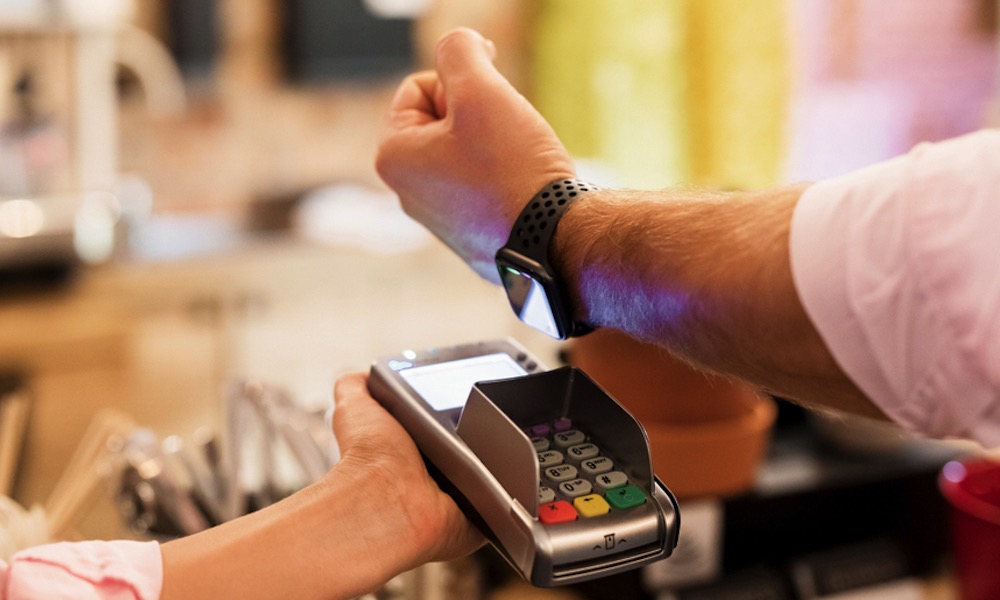Apple Has Another Cool Idea for the iPhone’s U1 Chip (and the Apple Watch, Too)
 Credit: Kaspar Grinvalds / Shutterstock
Credit: Kaspar Grinvalds / Shutterstock
Toggle Dark Mode
When Apple added the U1 chip to the iPhone 11 back in 2019, it was exciting to think of all the innovations that Ultra-Wideband technology could bring to the table. Sadly, however, the reality has been somewhat underwhelming so far, but the good news is that it looks like Apple is still hard at work for new ways to put its U1 chip to use.
To be fair, the iPhone 11 was so far ahead of the curve with the introduction of the U1 chip that it left Android makers scrambling to catch up, and the lack of anything significant in terms of user-facing features made it clear that Apple was playing the long game here.
When it first debuted, the U1 chip did nothing more than allow you to more efficiently AirDrop files, links, and videos with other iPhone 11 users, helping to identify which device you were pointing to so that it would show up first in the list of AirDrop.
While this was handy when trying to use AirDrop in a room filled with other iPhones, it was hardly a revolutionary or groundbreaking feature.
That said, however, it quickly became clear that Apple had bigger plans for its U1 chip. Chief among these was the idea of providing extremely precise location of lost items, likely even with the help of augmented reality features. It’s something that we’re sure to eventually see in Apple’s own AirTags, but it looks like other third-party trackers are joining the UWB party too.
Along the same lines, the U1 chip could also someday power more accurate indoor navigation features, although the need for venues like shopping malls and airports to add their own UWB transceivers means that we’re likely a few years away from that becoming a more widespread option.
However, that doesn’t mean Apple isn’t doing everything it can to make the best use of the technology in the meantime, and while some applications, like advanced Handoff on the HomePod mini may seem relatively small, they’re still nice quality-of-life improvements to the overall Apple ecosystem. It’s fair to say that Apple has some even bigger ideas up its sleeve, however.
UWB and Apple Pay
In a new patent unearthed by AppleInsider, it looks like Apple is considering a way to tie the U1 chip into Apple Pay, allowing the correct payment credentials to be selected based on the user’s location or proximity to an appropriate terminal.
At a basic level, this might be as simple as using machine learning to determine where you most often use a specific payment card, and then bring that one up by default when you happen to return to that location. However, features like Express Transit could also really benefit from this kind of location-based intelligence.
Further, Apple’s Wallet app can store more than just payment cards. Tickets, boardings passes, and loyalty/reward cards are also all stored within the Wallet app, and could therefore also take advantage of the U1 chip to make sure that the appropriate card is ready to go.
In fact, Apple’s Wallet app has already offered a similar feature going right back to the days before Apple Pay, when it was known as “Passbook.” Using companion apps, Wallet cards can have an associated list of up to 10 favourite locations, displaying push notifications to bring up the card when the user is near one of them. So, for example, you can have your Starbucks card ready to go whenever you arrive at the usual spot, or your movie theatre rewards card come up when you happen to be going out for a night at the cinema.
In this case, however, the recently granted patent goes a step further, describing a way for a device like the iPhone to detect a nearby terminal using ultra-wideband rather than the standard NFC payment technology, at which point it would select the appropriate payment method or other card.
According to the text of the patent, this could either be handled automatically, or the user could be prompted to confirm that the selected card or pass is what they actually want to use.
One of the major advantages of using UWB in this case, however, is that it provides slightly longer range than NFC, which would allow the user’s iPhone or Apple Watch to make the necessary determinations before moving the device close enough to actually begin an Apple Pay transaction. This could also have the benefit of bringing up the Wallet interface as soon as the user approaches the checkout line in a retail store.
In light of this new patent, it’s also notable that the Apple Watch Series 6 also quietly gained the U1 chip last fall, however Apple has yet to actually do anything with it, since none of the current UWB iPhone features like AirDrop and Handoff are available on the Apple Watch. In fact, we’ve been scratching our collective heads as to exactly what the U1 chip would do on the Watch, but tying it into Apple Pay and other Wallet transactions seems like the perfect reason for it to be there. It also suggests that we could see this feature arrive soon, perhaps even as part of watchOS 8 later this year.






